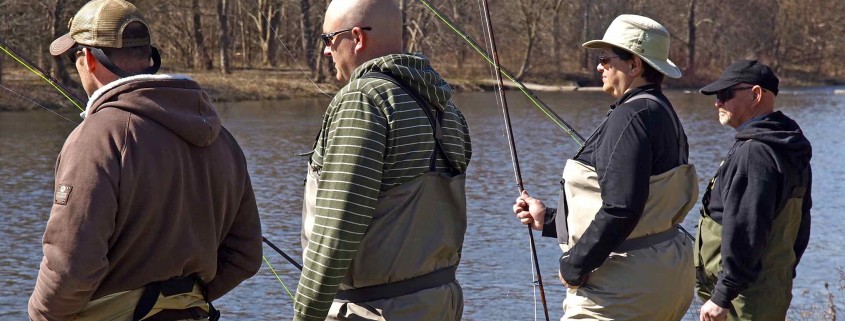
Tired of sticking your fly in that tree behind you?

There’s a solution for that and it’s called Spey Casting!
We normally associate Spey Casting with big two handed rods and big rivers, but in reality our normal trout gear will Spey cast quite well.
If we already have a trout rod and line, we can use it to Spey cast!
Spey casting lets us make fishable casts with our back to a bank thick with all sorts of trees and bushes. It also lets us make casts with zero false casting. Now that’s nice to know when we’re fishing an indicator and splitshot with a weighted fly. It’s fairly common to cast the splitshot off the line, move the indicator and on occasion even snap the weighted fly off on the backcast – Spey Casting solves all of that!
Single Hand Spey Casting isn’t just for little creeks. Sometimes on a larger river we find ourselves having to wade out into a run to get backcast room and in the process possibly spook fish. With single hand Spey casting, we can stand back from the run and not worry about our backcast or spooking fish.
It’s also not difficult to learn to Spey Cast on the side opposite to our dominant hand for those times when the wind blows wrong.
So we can see that learning to Spey Cast solves a number of persistent fly fishing problems, but here’s the neat bit: we don’t need specialized tackle. Our regular trout rods and lines can and will do the job for us!
We also find that single hand Spey Casting is not difficult to learn if we already know how to make an overhead cast. The forward stroke of both are identical so only the motions of the Spey Cast need to be mastered. If we already know how to roll cast then half the battle is already over. We just need to learn the extra motions of the Spey Cast and we’re ready to go fishing in those tight confines that have always frustrated us in the past.
All you have to do is bring your regular trout rod and line to the course – By the end of the session, you’ll be Spey Casting with it!
See here for Peter’s Complete BIO.
Three GREAT You Tube links created by Peter with examples of the possibilities:
2) This one is a bit “techie” as Peter is using a specialized line.


